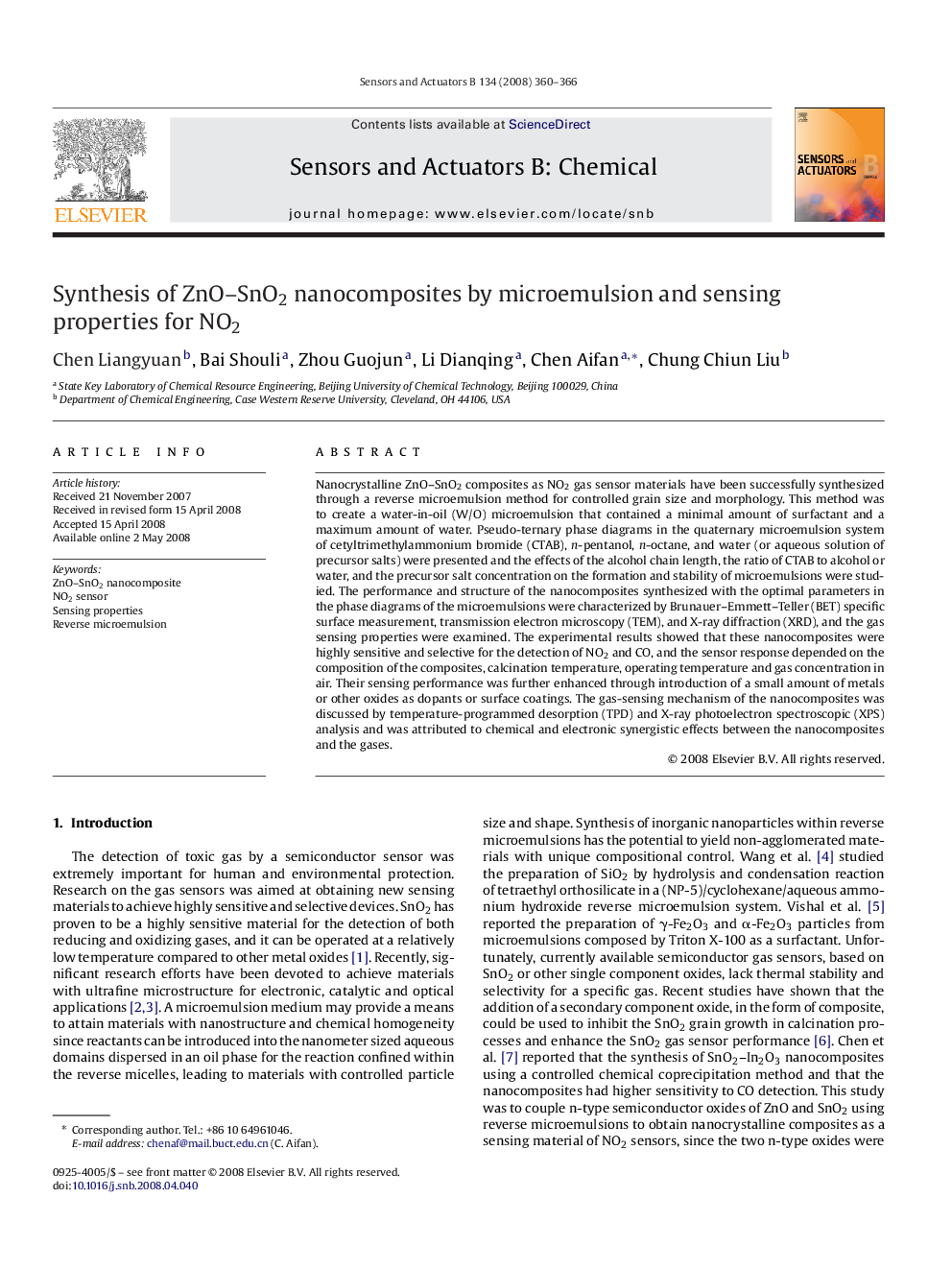| Article ID | Journal | Published Year | Pages | File Type |
|---|---|---|---|---|
| 741179 | Sensors and Actuators B: Chemical | 2008 | 7 Pages |
Nanocrystalline ZnO–SnO2 composites as NO2 gas sensor materials have been successfully synthesized through a reverse microemulsion method for controlled grain size and morphology. This method was to create a water-in-oil (W/O) microemulsion that contained a minimal amount of surfactant and a maximum amount of water. Pseudo-ternary phase diagrams in the quaternary microemulsion system of cetyltrimethylammonium bromide (CTAB), n-pentanol, n-octane, and water (or aqueous solution of precursor salts) were presented and the effects of the alcohol chain length, the ratio of CTAB to alcohol or water, and the precursor salt concentration on the formation and stability of microemulsions were studied. The performance and structure of the nanocomposites synthesized with the optimal parameters in the phase diagrams of the microemulsions were characterized by Brunauer–Emmett–Teller (BET) specific surface measurement, transmission electron microscopy (TEM), and X-ray diffraction (XRD), and the gas sensing properties were examined. The experimental results showed that these nanocomposites were highly sensitive and selective for the detection of NO2 and CO, and the sensor response depended on the composition of the composites, calcination temperature, operating temperature and gas concentration in air. Their sensing performance was further enhanced through introduction of a small amount of metals or other oxides as dopants or surface coatings. The gas-sensing mechanism of the nanocomposites was discussed by temperature-programmed desorption (TPD) and X-ray photoelectron spectroscopic (XPS) analysis and was attributed to chemical and electronic synergistic effects between the nanocomposites and the gases.
